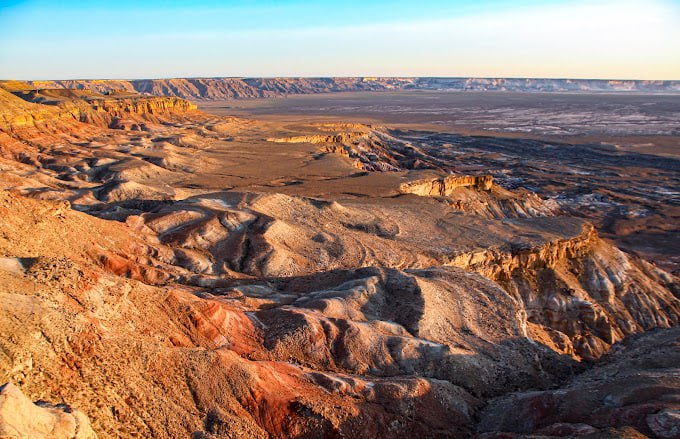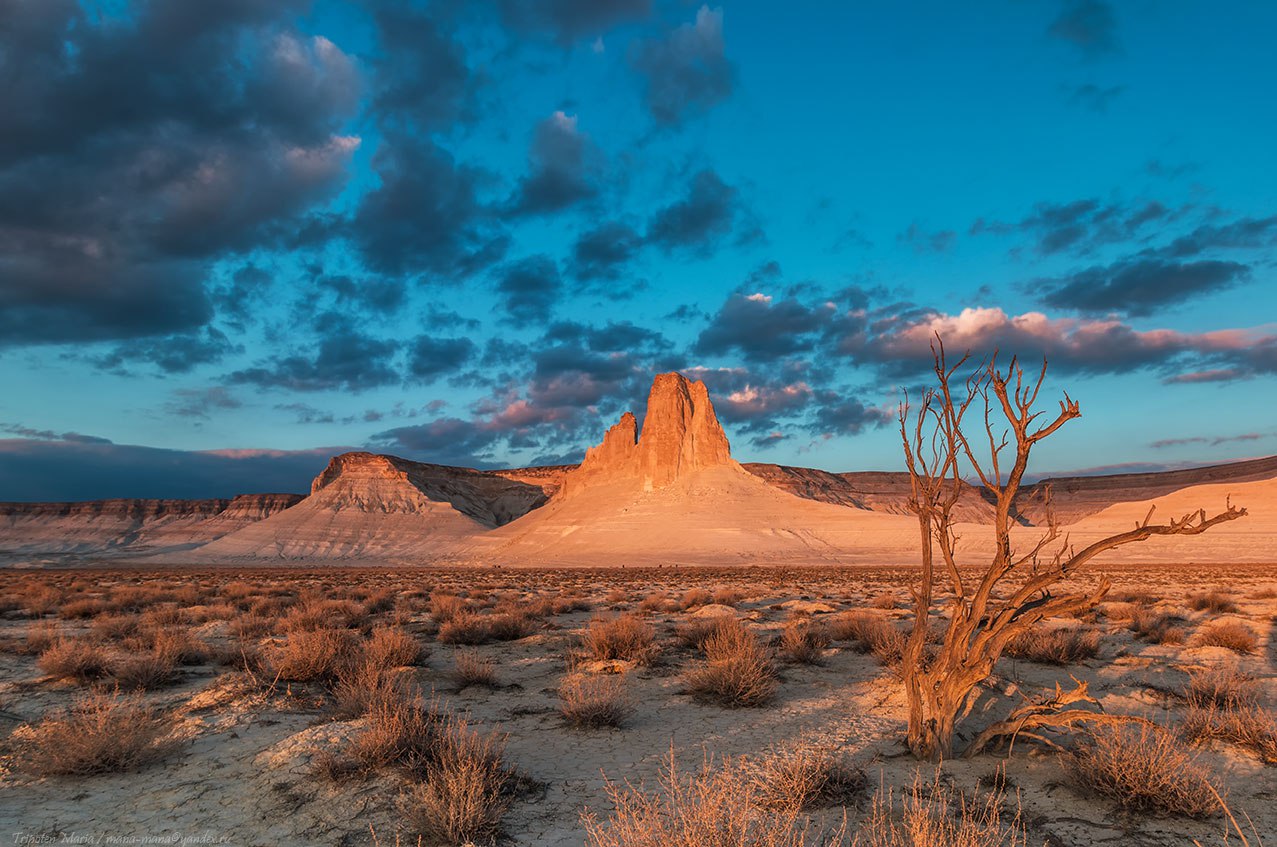 Planet Earth is truly amazing! One of the most unusual places on our planet is the Ustyurt Plateau. It is essentially the bottom of the dried-up ancient ocean Tethys (named after the Greek goddess of the sea Tethys). The age of the Ustyurt Plateau is not exactly known, but according to scientists, it ranges from 20 to 60 million years. Its layers consist of a cluster of various fossils: the remains of mollusks, sea urchins, fossilized corals and shell rock, as well as layers of limestone and chalk, compressed over millions of years on the ocean floor. In places of fresh cliffs exposing ancient rock, you can find the teeth of prehistoric sharks, reminiscent of those distant times.
Planet Earth is truly amazing! One of the most unusual places on our planet is the Ustyurt Plateau. It is essentially the bottom of the dried-up ancient ocean Tethys (named after the Greek goddess of the sea Tethys). The age of the Ustyurt Plateau is not exactly known, but according to scientists, it ranges from 20 to 60 million years. Its layers consist of a cluster of various fossils: the remains of mollusks, sea urchins, fossilized corals and shell rock, as well as layers of limestone and chalk, compressed over millions of years on the ocean floor. In places of fresh cliffs exposing ancient rock, you can find the teeth of prehistoric sharks, reminiscent of those distant times.
 The ancient geological formation of the Ustyurt Plateau occupies an area of about 200 thousand km² and is located on the territory of Uzbekistan and Kazakhstan. The plateau landscapes look like desert plains, hills, gorges and rare oases. The plateau breaks off to the surrounding plain with steep cliffs - 100 to 350 m high. Many kilometers have to travel along the foot of the cliffs in order to find a place to climb up.
The ancient geological formation of the Ustyurt Plateau occupies an area of about 200 thousand km² and is located on the territory of Uzbekistan and Kazakhstan. The plateau landscapes look like desert plains, hills, gorges and rare oases. The plateau breaks off to the surrounding plain with steep cliffs - 100 to 350 m high. Many kilometers have to travel along the foot of the cliffs in order to find a place to climb up.
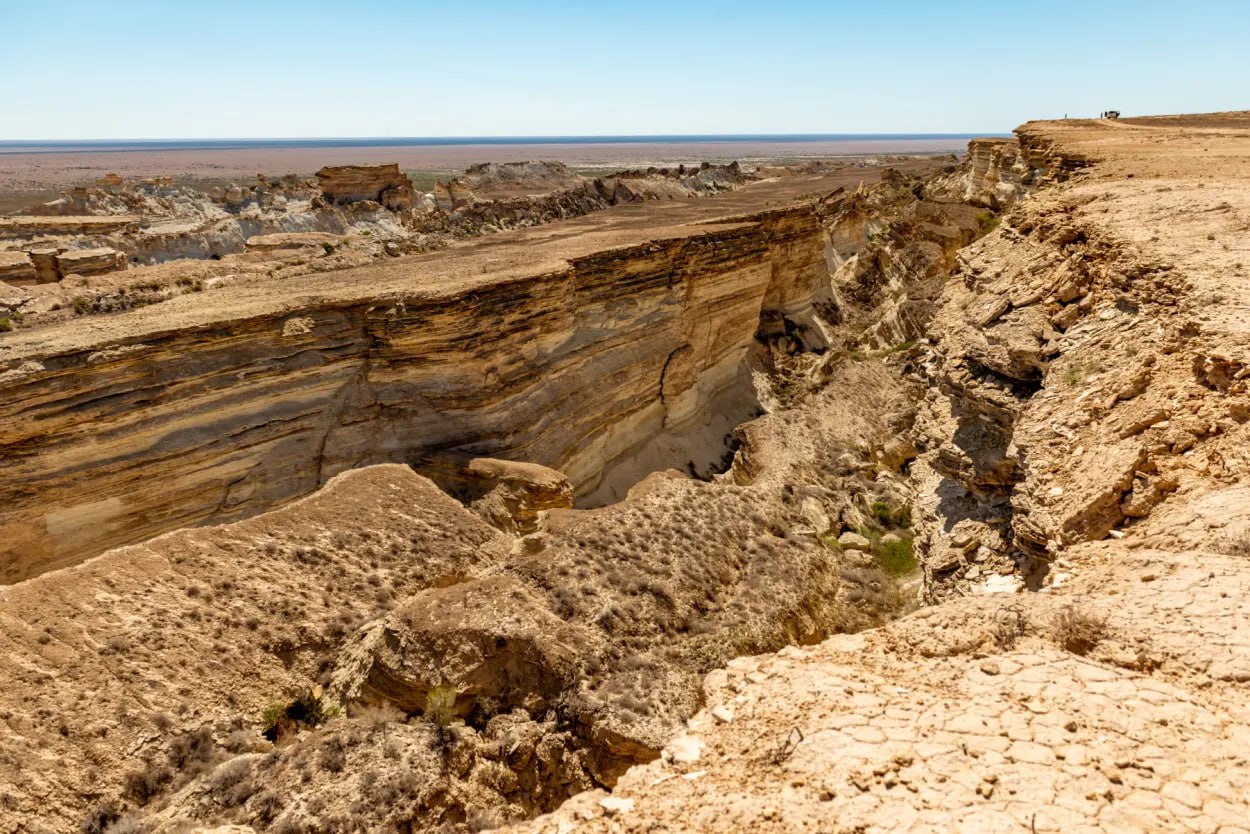 The climate on the Ustyurt plateau is sharply continental, characterized by significant temperature differences and little precipitation. An exhausting wind blows here almost always, constantly changing its direction. Under the influence of wind and time, the cliffs have acquired bizarre shapes.
The climate on the Ustyurt plateau is sharply continental, characterized by significant temperature differences and little precipitation. An exhausting wind blows here almost always, constantly changing its direction. Under the influence of wind and time, the cliffs have acquired bizarre shapes.
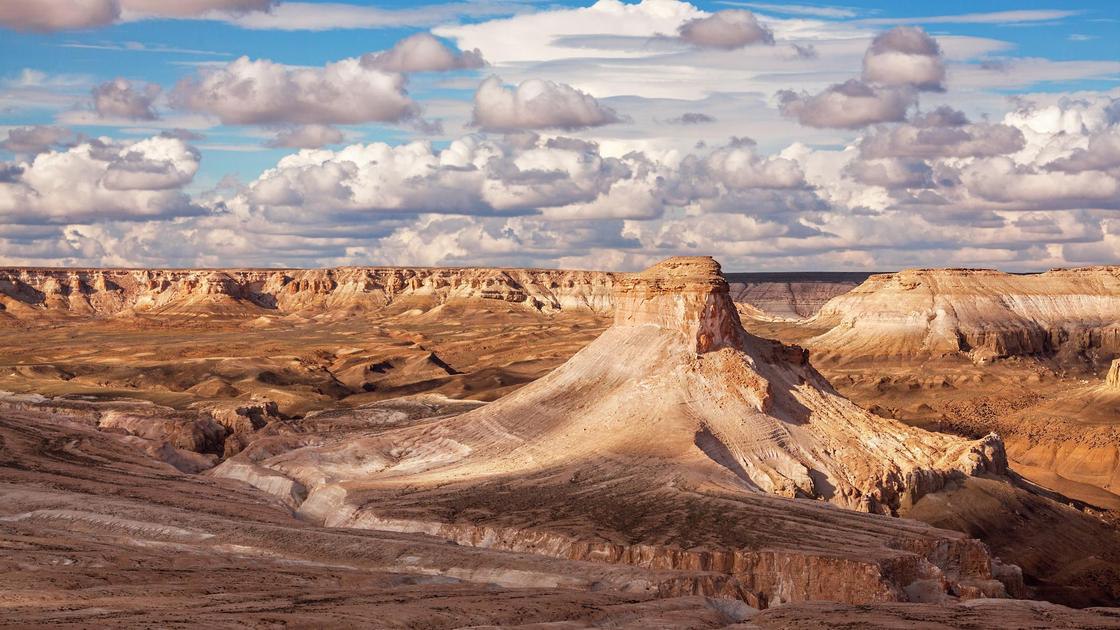 In the history of mankind, the Ustyurt plateau has always been an uninhabitable space, but already in the 6th-3rd millennia, the shores of the Aral Sea were inhabited by primitive people - sedentary fishermen of the Neolithic era, who are attributed to the Kelteminar culture. Scattered throughout the plateau are the sites of primitive people and their cemeteries. The plateau remembers the Scythians and Mongol conquerors, and witnessed the great migration of peoples.
In the history of mankind, the Ustyurt plateau has always been an uninhabitable space, but already in the 6th-3rd millennia, the shores of the Aral Sea were inhabited by primitive people - sedentary fishermen of the Neolithic era, who are attributed to the Kelteminar culture. Scattered throughout the plateau are the sites of primitive people and their cemeteries. The plateau remembers the Scythians and Mongol conquerors, and witnessed the great migration of peoples.
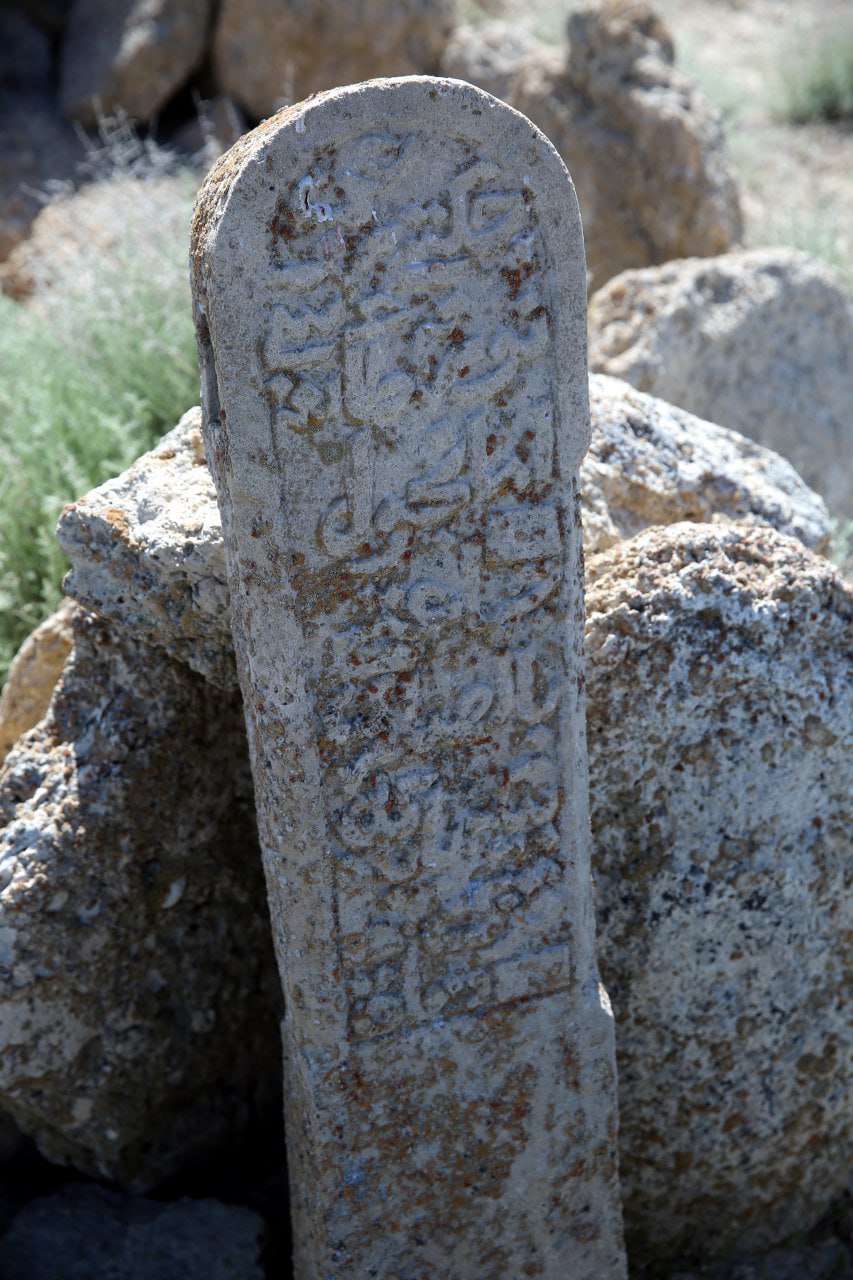 During the heyday of the Great Silk Road, the vast desert of the Ustyurt plateau, stretching for hundreds of kilometers without landmarks, springs, or wells, was considered a dangerous and lifeless place. Usually, caravans bypassed the Ustyurt plateau from the south, along the Uzboy River, or went north along the Aral Sea. Today, two monuments from those times have survived - the ruins of the Kurgancha-Kala fortress and the foundation of the lighthouse on Cape Urga.
During the heyday of the Great Silk Road, the vast desert of the Ustyurt plateau, stretching for hundreds of kilometers without landmarks, springs, or wells, was considered a dangerous and lifeless place. Usually, caravans bypassed the Ustyurt plateau from the south, along the Uzboy River, or went north along the Aral Sea. Today, two monuments from those times have survived - the ruins of the Kurgancha-Kala fortress and the foundation of the lighthouse on Cape Urga.
 In the 80s of the 20th centuries, scientists noticed unusual lines of artificial origin. These lines connected into arrow-shaped signs up to 900 m long, pointing to the north. This system of arrows stretched for more than a hundred kilometers. They are impossible to see from a human height. A whole complex of archaeological monuments was discovered here - burial mounds, burials, and religious buildings. The latest ones date back to the 10th-15th centuries. Archaeologists have not yet come to a consensus on the origin and purpose of the Ustyurt "arrows". It is assumed that these could have been structures for giant driven hunts for herds of kulans and saigas, or something else.
In the 80s of the 20th centuries, scientists noticed unusual lines of artificial origin. These lines connected into arrow-shaped signs up to 900 m long, pointing to the north. This system of arrows stretched for more than a hundred kilometers. They are impossible to see from a human height. A whole complex of archaeological monuments was discovered here - burial mounds, burials, and religious buildings. The latest ones date back to the 10th-15th centuries. Archaeologists have not yet come to a consensus on the origin and purpose of the Ustyurt "arrows". It is assumed that these could have been structures for giant driven hunts for herds of kulans and saigas, or something else.
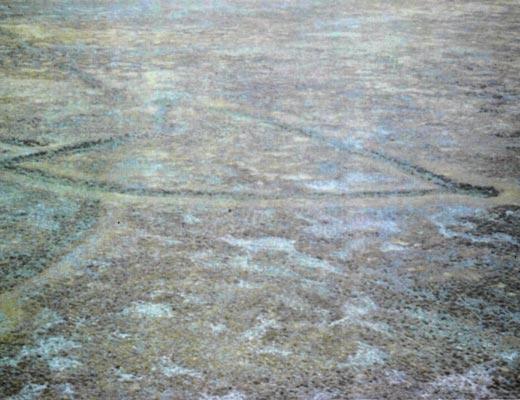 The first automobile road crossing the Ustyurt plateau appeared in the middle of the 20th century, and the Kungrad-Beineu railway was built only in 1972. Today, the plateau does not represent any economic significance, but the tourism industry is developing. A trip to the Ustyurt plateau is usually part of a tour to the Aral Sea. Leaving the city of Nukus, tourists visit Muynak and the ship graveyard, travel along the former seabed to the Ustyurt plateau, and then stop for the night in a yurt camp on one of its ledges.
The first automobile road crossing the Ustyurt plateau appeared in the middle of the 20th century, and the Kungrad-Beineu railway was built only in 1972. Today, the plateau does not represent any economic significance, but the tourism industry is developing. A trip to the Ustyurt plateau is usually part of a tour to the Aral Sea. Leaving the city of Nukus, tourists visit Muynak and the ship graveyard, travel along the former seabed to the Ustyurt plateau, and then stop for the night in a yurt camp on one of its ledges.
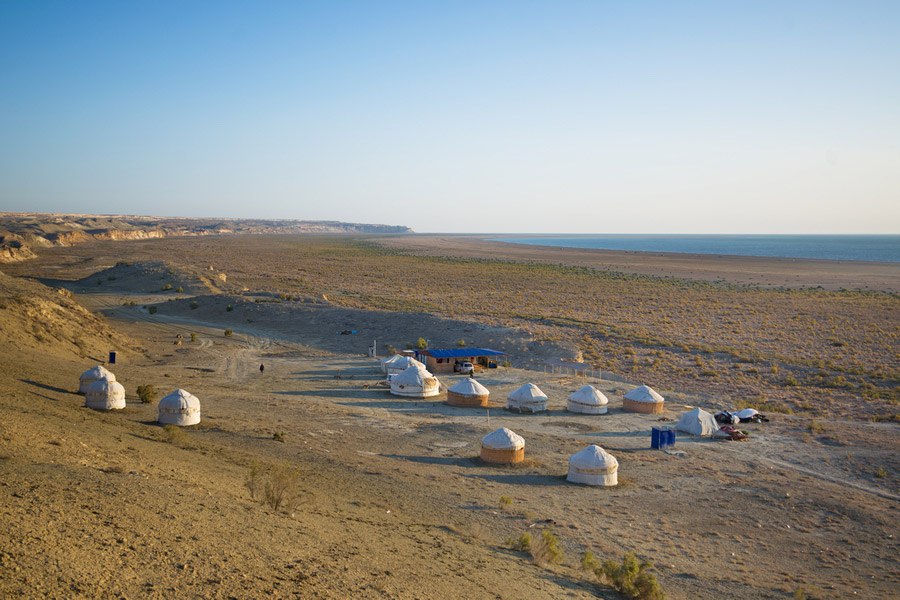 The return route is laid along the road, allowing you to see another part of the plateau with a cape near the abandoned village of Urga, which rises above Lake Sudochie.
The return route is laid along the road, allowing you to see another part of the plateau with a cape near the abandoned village of Urga, which rises above Lake Sudochie.
The stunning geological formation of the Ustyurt Plateau can be a great location for unique photography. Sunrise and sunset are ideal for adding texture and enhancing color. Sharp cliffs with high steep walls and complex shapes resemble fantastic sculptures carved by nature. These formations can have a variety of shades, from snow-white to golden and red, creating picturesque contrasts against the blue sky. Their unique texture and shape often evoke associations with alien landscapes.
